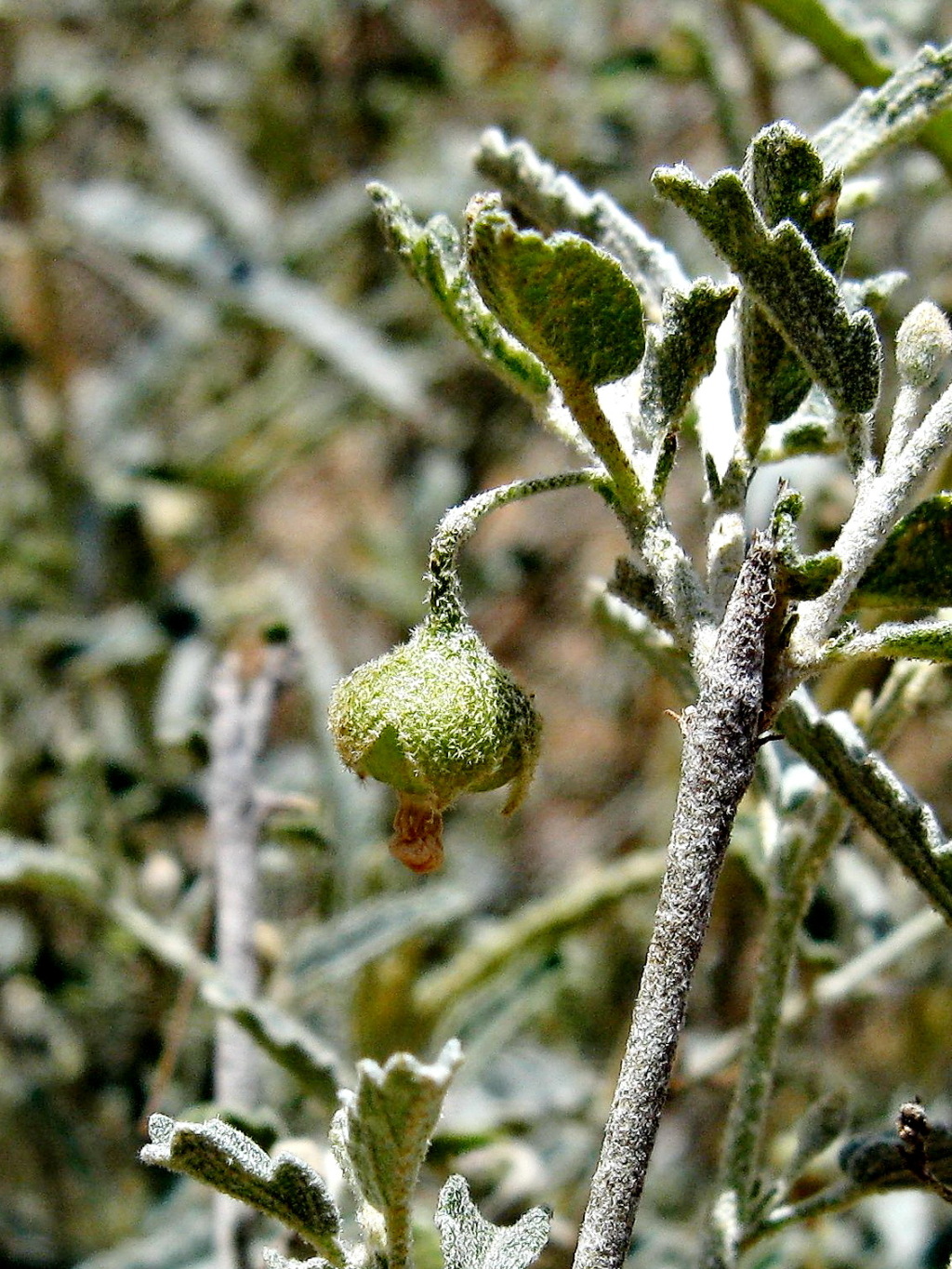Sida ammophila
F.Muell. ex J.H.Willis Sand SidaUpright or spreading, rarely prostrate, perennial herb or subshrub, 20–80 cm high; branches stellate-hairy. Leaves narrowly oblong or narrowly ovate, 5–55 mm long, 2–8 mm wide, rounded or cordate at base; margins serrate; surfaces stellate-hairy, grey, grey-green or blue-green above, paler and less hairy below; stipules 1.5–3 mm long. Flowers solitary (rarely paired); pedicel not exceeding leaves, 1.5–25 mm long, with hairs denser above articulation; calyx not ribbed, divided to c. midway; lobes 2.2–2.6 mm long; petals 3–3.5 mm long, emarginate; styles 5. Fruit pyriform, 3.5–5 mm diam., smooth above, wrinkled below, glabrous except for sparse hairs about apical grooves; mericarps c. 3.4 mm high, smooth apically on lateral wall, reticulate below, splitting widely in 2 at apex, unawned. Flowers Nov.–Jun.
MuM, MSB, RobP, MuF. Also WA, NT, SA, Qld, NSW. Occurs on red sand and loam soils in the Hattah-Mildura area, mostly in non-eucalypt open shrublands, on dunes and roadsides, depleted by grazing and clearing.
Distinctive in having dark brown conical fruits with 5 glabrous mericarps, each with a deep groove at the apex. Shrubs often have a silvery-grey appearance.
Barker, R.M. (1996). Sida. In: Walsh, N.G.; Entwisle, T.J., Flora of Victoria Vol. 3, Dicotyledons Winteraceae to Myrtaceae, pp. 340–345. Inkata Press, Melbourne.
 Spinning
Spinning


